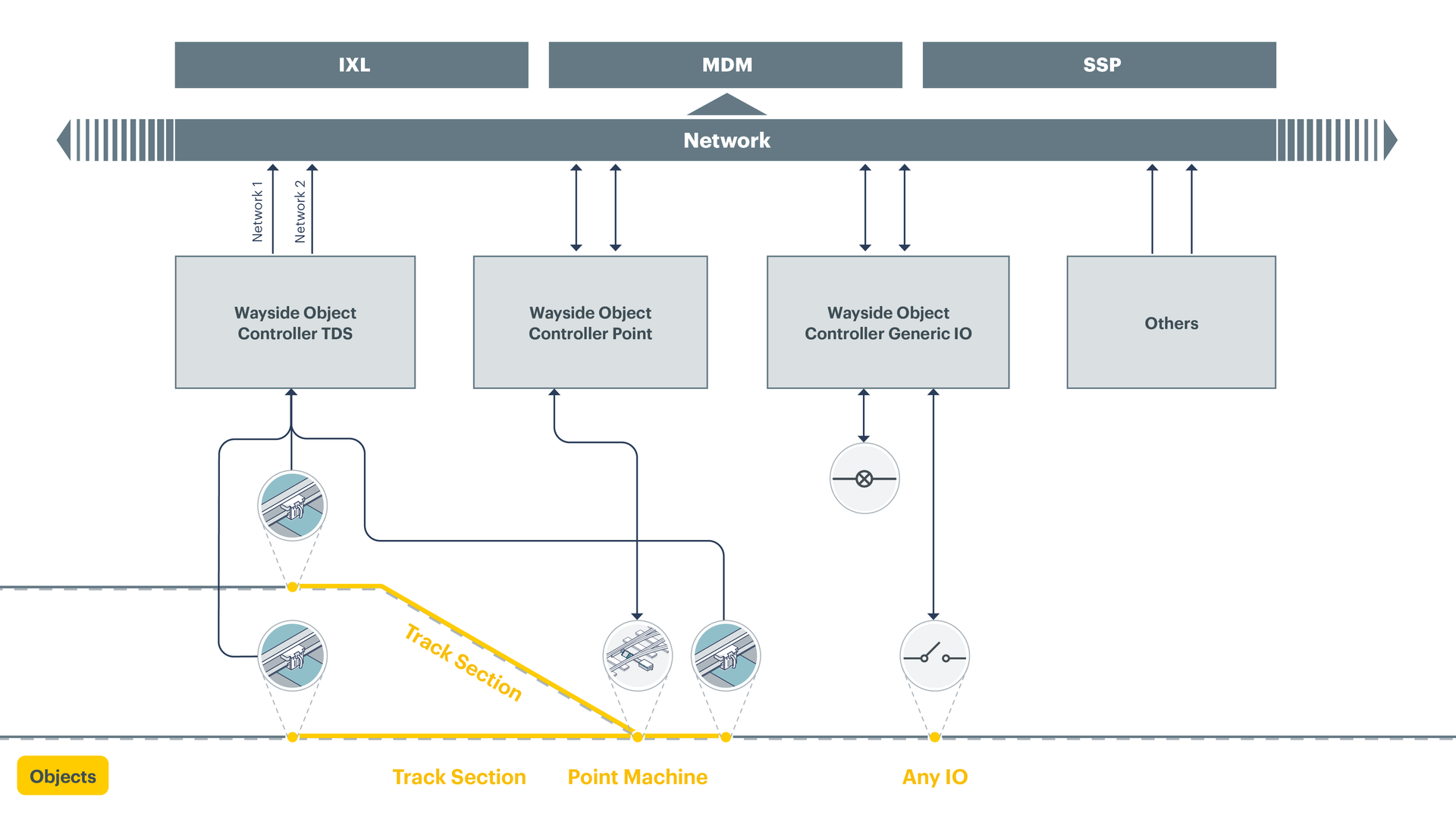BTOB RAIL
Frauscher:
Unlocking
the Multifaceted Potential of
Axle Counters:
Supervisor Track Section
and
Counting Head Control
Supervisor Track Section
The STS is an automated fault correction which means that if an error on track occurs and is caused by an external disturbance, the system is able to automatically reset itself. The process is carried without requiring time-consuming manual intervention.
The working principle of the STS consists of overlaying track sections by a supervisor section. If there is an error on a track section but the corresponding supervisor section is clear, the system will automatically preform a reset. Similarly, a faulty supervisor section is reset if the corresponding track sections which are covered by this STS are clear.

Figure 1: Working principle of STS
The arrangement in which counting heads on track sections are overlayed with supervisor sections is highly configurable and contingent upon the specific project needs and requirements. STS is fully compliant with SIL4 operation and can be used in a multitude of applications such as level crossings. In such cases, this feature guarantees that a level crossing can continue to be operated in the event of a permanent fault with the track section, increasing overall availability of the system while maintaining safe operation.
Counting Head Control
CHC helps to avoid counting errors and fault messages from being generated due to external factors which may cause interferences such as road traffic, metal objects from maintenance activities or debris on track surfaces.
Thanks to this unique feature, counting heads can be switched to a stand-by mode in cases where adjacent track sections are clear. Furthermore, the number of supressed disturbances or false detections within the system can be freely configured when counting heads are in stand-by mode, meaning the track section only turns to occupied once the set threshold for disturbances is reached. Certain applications such as tramways can experience an increased number of disturbances due to factors such as urban traffic – the CHC can of course successfully overcome this, leading to no counting errors.
Because no occupied notifications or errors are created, a reset is therefore not required. Once an approaching vehicle enters either of the adjacent track sections, the suppression is immediately deactivated, resulting in normal fail-safe train detection in line with SIL 4 requirements. Counting Head Control thus provides increased system availability while maintaining high levels of safety.


















